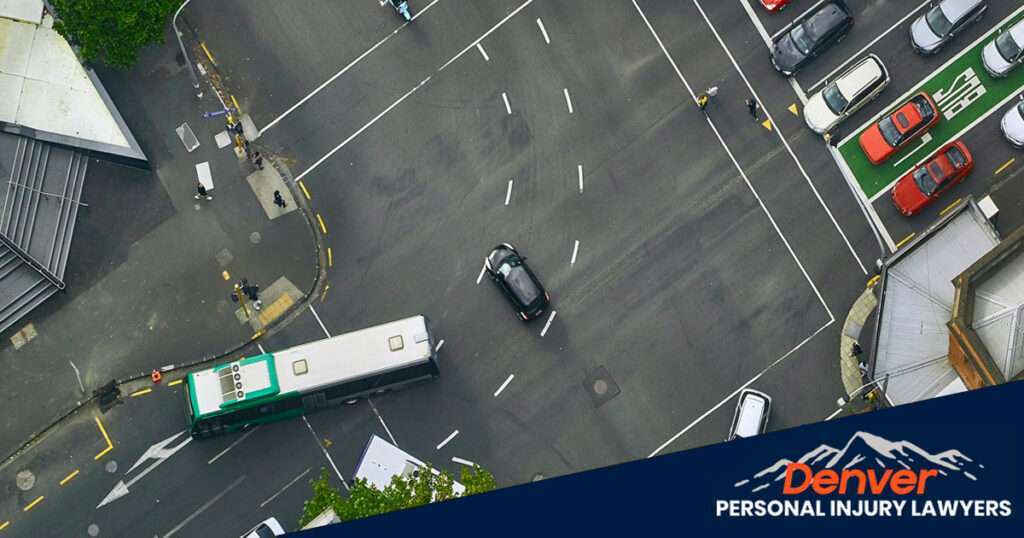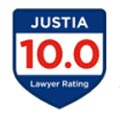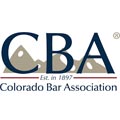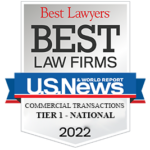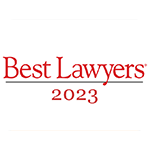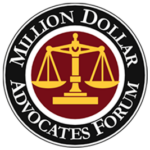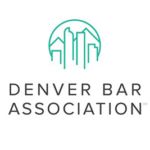Operating a vehicle in Denver and its surrounding suburban areas can be difficult. This is especially true when winter sets in and brings tricky weather conditions for driving. On top of that, visitors flock to Denver to visit the metropolitan area each year.
In this article, we will discuss some of the most dangerous intersections in Denver and why intersections are more accident-prone. It’s estimated that an average of 30 percent of all car accidents happen at intersections. By knowing what areas in Denver have high accident rates, you can stay more alert when you are driving in these areas and help prevent intersection accidents.
Table of Contents
ToggleDenver’s Most Problematic Intersections
A report from the Denver Police Department gives us insight into the top 10 intersections in the city with the highest accident rates. The report is an updated list of Denver’s most dangerous intersections from 2021. These intersections consistently rank as the top accident rates for intersections in Denver.
Furthermore, according to a report from Westworld, despite traffic volume decreasing since the pandemic, accident rates remain high at these intersections. Now that the pandemic is over and traffic volumes continue to rise again, so will accidents at these intersections.
Here are the top ten most dangerous intersections in Denver:
- Colorado Boulevard and East Martin Luther King Jr. Boulevard
- Colorado Boulevard and East Colfax Avenue
- Colorado Boulevard and East 40th Avenue
- North Tower Road and East 56th Avenue
- Park Avenue West and North Globeville Road
- South Quebec Street and East Alameda Avenue
- West Alameda Avenue and South Santa Fe Drive
- West Colfax Avenue and Kalamath Street
- West Mississippi Avenue and South Platte River Drive
- West Mississippi Avenue and South Santa Fe Drive
In 20201, the intersection with the highest motor vehicle accident rate was Colorado Boulevard and East Colfax Avenue. This is a known trouble area for Denver drivers.
The reality is that driving in a city or metropolitan area is not easy. It requires drivers to stay laser-focused on the road and be defensive drivers. And it only takes one second of distraction or negligence to cause a collision.
Denver is crowded with residents but has visitors for all types of attractions. From beautiful scenic hikes to wintertime slopes and other fun activities, visitors enjoy Denver all year round. Unfortunately, with the influx of tourists, the streets will inevitably become more congested, increasing the probability of car accidents.
Another distinguishing feature of Denver is the ice. Icy road conditions can be dangerous or even deadly to people and pedestrians on the road. Moreover, visitors may not be familiar with the proper safety procedures to handle a motor vehicle in such weather conditions. Not everyone lives in a place that gets annual frozen terrain.
What Are The Most Common Causes of Denver Intersection Accidents?
According to the National Highway Traffic Safety Administration (NHTSA), negligence is the leading cause of intersection accidents. Negligence is when a driver fails to operate their vehicle with reasonable care to prevent harming others.
Many car accidents are preventable, especially when they are caused by driver negligence. Drivers have a duty to obey traffic laws and operate their vehicles reasonably safely to avoid causing a crash.
Here are some examples of negligence that often cause intersection accidents:
Speeding
When drivers see a yellow light, they often speed through the intersection rather than slow down. A yellow light indicates that the driver needs to slow down and stop. However, many Denver drivers think yellow light means “speed up and beat the light.” This is considered negligent driving and is against the law. Additionally, speeding through an intersection can cause a disastrous collision.
Left-Turns
Left turns require the driver to be vigilant and attentive, checking thoroughly in several directions before turning. In addition, drivers must look out for oncoming vehicles and pedestrians before they make a turn. With such a high frequency of accidents occurring with left turns at intersections, some places are installing arrow signals for left turns.
Running a Red Light
It’s illegal and extremely dangerous to run a red light. Wherever you need to be or however late you are is not worth endangering the lives of others. Running a red light is when a vehicle enters the intersection anytime after the signal has turned red. A driver that unintentionally enters an intersection while the light changes are not considered “running a red light.”
Failing to Stop at a Red Light
On the other hand, many drivers making a right turn don’t stop when the light is red. Failing to do so can cause a crash. Whenever making a right turn, the driver should come to a complete stop before turning. If the light is red, they still need to come to a complete stop before turning.
Rear-End Collisions
Rear-end collisions frequently occur at intersections. Rear-end collisions often happen when one driver slows down for a yellow light, and the car behind them speeds up to beat the signal change. Most of the time, the rear car is at fault for a rear-end collision.
Why Are These Denver Intersections Dangerous?
The NHTSA released data that analyzed crash statistics from 1997 to 2004, reporting almost 64,000 fatalities from intersection crashes. That translates to roughly 7,000 intersection fatalities each year.
The number one driver error that led to intersection crashes was the failure to properly yield to other traffic (87%), followed by failure to obey traffic signals (62%). So the bottom line is that intersection accidents are usually caused by human error and are more dangerous areas for accidents.
The two main types of human error that often contribute to crashes at intersections are recognition and decision error.
Recognition Error
NHTSA crash stats report showed that 96% of intersection collisions were due to driver error, with over half of them caused by recognition error. Recognition error includes:
- Not paying attention while driving
- Distracted driving
- Internal and external distractions
- Failing to look before proceeding
Decision Error
The crash stats from NHTSA also showed that 29% of intersection-related accidents were attributed to decision errors. Examples of decision errors include:
- Turning without signaling
- Abrupt lane changing
- Turning recklessly and causing oncoming traffic to brake suddenly
- Forcing your way into an intersection
- Turning after the light is red on a left turn
- Speeding up to beat a yellow light
- Any time a driver moves too quickly to react is considered a decision error.
Tips to Avoid Denver Intersection Crashes
This article should not intimidate you from driving at intersections. But it also should not be taken lightly, given the statistics on intersection accidents. Collisions at intersections can have deadly outcomes. That’s why we’ve compiled a list of tips to help you maneuver safely at intersections and prevent becoming a statistic.
Here are some effective tips to avoid a motor collision at an intersection:
Stay Cool
The most important thing for all drivers is to stay relaxed while driving. Many crashes occur due to drivers with road rage or other emotional input into driving. This makes it difficult to think clearly and assess a situation effectively. If you are prone to road rage, try taking a deep breath and de-escalating the situation. Keep enough distance between yourself and another driver if they appear to have road rage.
Drive Slow
Going above the speed limit increases the likelihood of an accident. Speeding just 15 mph over the limit nearly triples the odds of a crash (67%). More cars at intersections going in different directions can create a disastrous collision. Drive slow and stay alert.
Equate Yellow to Red
It’s not necessary to speed to get through a yellow light. It will only make one or two minutes of difference in your trip. However, if another driver runs the same light from a different direction, you risk getting into a head-on collision. This is a worst-case scenario since both parties are accelerating on approaching head-on. Head-on collisions often have some of the most severe injury outcomes or fatalities.
Pick Your Lane (And Try to Stay In It)
We’ve all seen that guy on the road weaving through traffic and making aggressive lane changes. However, staying in your lane is much safer; only switch lanes when necessary. Lane changes can become even more dangerous when large vehicles like SUVs or commercial trucks are nearby.
Use Your Turn Signals
Everyone has turn signals for a reason. We need to use them to communicate with other drivers. Letting other drivers know which way you plan to turn can prevent confusion and danger.
Limit Distractions
While it’s tempting to do your makeup or change the music at the intersection, staying safe is more important. Try to keep your phone away from you, so you don’t have the temptation to check it until you arrive at your destination. It takes a split second to get distracted and cause an accident.
Be on the Defense at Intersections
Intersections are unassuming to most drivers, but the statistics show how dangerous they can be. During busy traffic hours, they can be complicated and hectic. Not every driver will follow traffic rules, so be on the defense. Look for visual cues and always look in all directions before proceeding.
Contact a Denver Car Accident Lawyer Today
If you were involved in an intersection accident caused by another negligent driver, you might need professional legal help.
See a doctor as soon as possible after the accident, even if you’re unsure how severe your injuries are. Sometimes it takes time for injuries to develop and present the full extent of symptoms. Once you have the appropriate medical care, it’s time to consult with experienced Denver car accident attorneys. Intersection accidents are no joke; if you were injured in one, you might be eligible for compensation.
We offer a free initial case review, so don’t delay scheduling your consultation.

